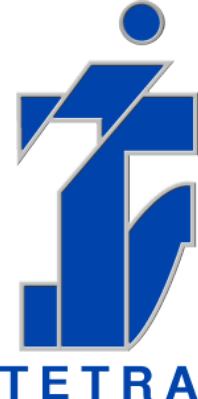Introduction
The modern IT infrastructure landscape is no longer confined to on-premises data centres. As organisations embrace cloud computing, they find themselves managing resources both in the cloud and within traditional IT environments. This duality, often referred to as a hybrid cloud architecture, offers flexibility, scalability, and cost-effectiveness—but it also presents unique challenges in monitoring.
Enter Nagios—a powerful and highly extensible monitoring tool trusted by enterprises worldwide. Known for its robust capabilities in infrastructure monitoring, Nagios excels in hybrid environments, ensuring seamless visibility across on-premises systems and cloud assets.
In this blog, we’ll explore how Nagios simplifies hybrid cloud and on-premises monitoring, its key features, use cases, and why organisations should partner with Tetra to get the most out of their Nagios deployment.
Why Hybrid Cloud Monitoring is Critical?
With businesses increasingly adopting multi-cloud and hybrid strategies, IT teams need to ensure:
- Continuous availability of mission-critical applications
- Real-time performance tracking of both physical and virtual environments
- Quick resolution of incidents to reduce downtime
- Compliance with security and regulatory policies
However, managing infrastructure spread across AWS, Azure, GCP, and local data centres can lead to:
- Data silos
- Monitoring blind spots
- Inconsistent alerts
- Complex root cause analysis
That’s where a centralised monitoring platform like Nagios proves invaluable.
What Makes Nagios Ideal for Hybrid Monitoring?
Nagios has established itself as a leader in IT infrastructure monitoring due to its open architecture, customizable plugins, and modular design. Here's how it seamlessly monitors hybrid cloud + on-prem environments:
1. Unified Monitoring Across Platforms
Nagios XI and Nagios Core can monitor:
- On-prem servers, switches, routers, firewalls
- Cloud instances (EC2, Azure VMs, GCP Compute Engines)
- SaaS application performance
- Containers and microservices (via plugins)
This centralised approach provides a single-pane-of-glass view of all systems, regardless of their physical or virtual location.
2. Plugin-Based Extensibility
With thousands of community-contributed and custom-developed plugins, Nagios can:
- Integrate with AWS CloudWatch, Azure Monitor, Google Stackdriver
- Monitor cloud-native metrics like CPU, memory, disk usage, network IO, and more
- Leverage APIs to connect with third-party tools and services
Vendor restrictions do not limit you. If it has an API or SNMP interface, Nagios can monitor it.
3. Distributed Architecture
Nagios supports modular, distributed setups using tools like NRDS, NSClient++, Mod Gearman, or NRPE to monitor geographically dispersed environments.
This makes it ideal for:
- Multi-region cloud deployments
- Branch office and data centre integration
- Scalability across thousands of nodes
4. Event Correlation and Root Cause Analysis
Nagios offers event correlation features that group related alerts and suppress redundant notifications, making it easier to identify real root causes in hybrid setups.
With parent-child relationships, you can visually track upstream/downstream dependencies across cloud and local systems.
5. Custom Dashboards and Reporting
Use Nagios XI’s dashboard builder or third-party visualisation tools to:
- Track uptime and performance
- View historical trends
- Monitor SLAs
- Build role-specific dashboards for teams or executives
Custom dashboards give visibility into hybrid operations from a unified platform.
Key Benefits of Using Nagios in Hybrid Environments
- Cost-Effective: Unlike many commercial SaaS monitoring platforms, Nagios offers flexible licensing and open-source freedom, reducing total cost of ownership.
- Vendor Agnostic: Nagios doesn’t tie you to a specific cloud provider or ecosystem. It works equally well with AWS, Azure, Google Cloud, and private clouds.
- Security-Focused: With proper hardening, encryption, and access controls, Nagios provides secure monitoring even for systems behind firewalls or within air-gapped environments.
- Automation Ready: Nagios integrates well with configuration management tools like Ansible, Chef, and Puppet, and supports auto-discovery, making it ideal for dynamic cloud setups.
How Tetra Enhances Your Nagios Hybrid Monitoring Deployment?
While Nagios is powerful, getting the best out of it requires expert configuration, integration, and scaling. That’s where Tetra comes in.
We’ve helped enterprises, PSUs, and global brands deploy and optimise Nagios in highly complex hybrid cloud + on-prem environments.
Here’s what Tetra offers:
Nagios Consulting and Assessment: We evaluate your current IT environment and design a monitoring architecture tailored to your business—whether it’s cloud-heavy, data-centre based, or hybrid.
Plugin Development and Integration: Our team builds custom plugins for monitoring specialised devices, applications, or services, including:
- AWS CloudWatch integrations
- Meraki API-based monitoring
- Storage, firewall, and hardware health checks
Secure and Distributed Architecture Setup: We implement hardened and scalable Nagios deployments with Mod Gearman, NRPE, and secured API integrations—even for air-gapped environments.
Custom Dashboards and Alerting: From executive dashboards to SLA-driven reports, we help you visualise the data you care about.
Integration with ITSM Tools: We configure alert routing and automation via tools like ServiceNow, iHelpDesk, Jira, or Slack—ensuring incidents are logged and escalated promptly.
24/7 Support and SLA-Driven Monitoring as a Service: With Tetra, you don’t just get a tool—you get a dedicated partner. Our remote monitoring teams ensure your infrastructure stays healthy, always.
Conclusion: Future-Proof Your Hybrid IT Monitoring with Nagios + Tetra
Hybrid cloud architectures are here to stay. As businesses continue to balance cloud adoption with existing on-prem investments, they need a monitoring solution that’s flexible, scalable, and deeply customizable.
Nagios delivers exactly that—and when partnered with Tetra, it becomes a powerful engine for reliability, uptime, and efficiency.
Why Choose Tetra?
- 15+ years of experience in Nagios consulting and deployment
- Expertise in both cloud and legacy infrastructure monitoring
- Custom plugin development and API integrations
- Proven delivery in BFSI, healthcare, government, manufacturing, and more
- 24/7 support with deep SLA commitments
Don’t just monitor your hybrid cloud—master it. Let Tetra and Nagios show you how.





